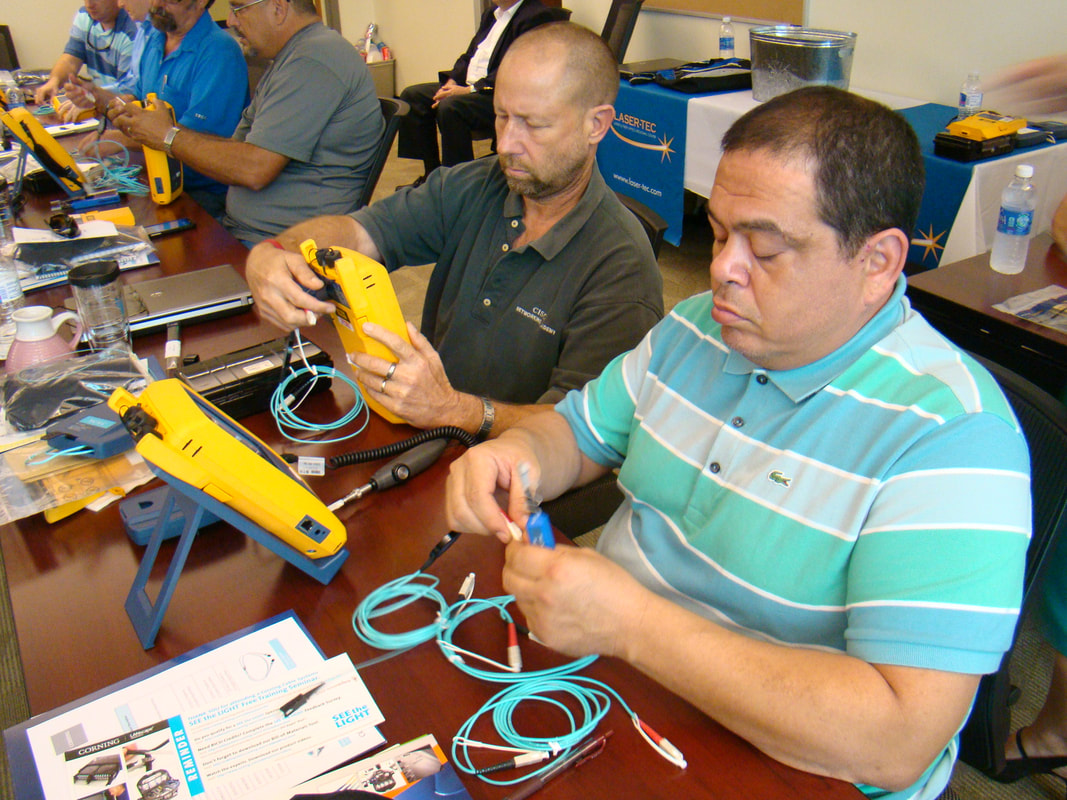/ Professional Development Courses / Fundamentals of Fiber Optics
This course provides a practical, real-world perspective on the fundamentals of fiber optics technology and optical data communications. It examines the reasons why optical fibers are the preferred communications medium, surpassing copper wire in all performance measures. A thorough explanation of how fibers work will be offered, as well as useful coverage of other related optical components and how those components fit into system-level applications. All important elements of a fiber-optic link will be introduced and discussed, such as transmitters, optical fiber, and receivers. Course participants will learn about total internal reflection, types of optical fibers used, connectors and splices, and various types of measurement. Practical skills that a fiber cable installer needs in the field will be practiced through hands-on experiments that include cleaning and visual inspection of the connector end face, installation of the connector on the optical fiber, and splicing of two fibers. Finally, the attendants will be trained to use and perform different measurements using visual fault locators, an optical loss test set (OLTS), and optical time domain reflectometry (OTDR) equipment.
Course Length
Online: 6 Months
Hands-On: 2 full days (optional)
*currently unavailable*
Prerequisite
Introduction to Photonics
Online course: $420
U.S. Educators can apply for a LASER-TEC scholarship. Contact us for details.
The cost of practical session does not include the cost of travel, lodging, or any other affiliated expenses.
We are unable to accept international payments at this time, we apologize for the inconvenience.
- Describe the term fiber optics and outline the progress made in the history of fiber optics
- List the parts of a fiber-optic data link and understand the function of each part
- Discuss the advantages and the disadvantages of fiber optics systems compared to electrical communications systems
- Explain how optical fibers transmit light, including the concept of total internal reflection, single vs. multimode operation, extrinsic and intrinsic losses, attenuation, and dispersion of light through a fiber
- Understand the basics of optical fiber manufacturing, including the vapor phase oxidation, direct-melt optical fiber fabrication, and other phases of the fiber manufacturing process
- Identify the basic cable components and their function, such as buffers, strength members, and jacket materials
- Describe a fiber-optic splice, connector, and coupler as well as the types of connections they form in systems
- Calculate and provide basic analysis of a fiber link budget
- Explain the difference between different topologies (such as Bus, Ring, Star, and Tree), FDDI, Ethernet, Fiber Channel, wave-length division multiplexing, Passive Optical Networks, and FTTH concepts
- Inspect and clean the end face of a fiber-optic connector
- Install a fiber-optic connector on the optical fiber using the UNICAM method
- Identify the types of fiber-optic mechanical and fusion splices, and outline the basic splicing techniques for each type of fiber-optic splice
- Properly set the fusion splicer and perform fusion splicing of two optical fibers
- Describe optical fiber and optical connection laboratory measurements to evaluate fiber-optic components and system performance
- Perform Tier 1 (using optical loss test set) and Tier 2 (using OTDR) measurements, including proper adjustment of the equipment and understanding of TIA standards
- Describe the value for conducting accurate, reliable, and repeatable test measurements as well as the importance of writing detailed test reports and other documentation




